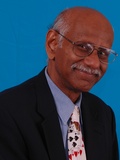THIAGI GAMELETTER:
May 2010
SERIOUSLY FUN ACTIVITIES FOR TRAINERS, FACILITATORS,
PERFORMANCE CONSULTANTS, AND MANAGERS.
TABLE OF CONTENTS
Masthead
Our mission statement, copyright notice, and cast
of characters.
Facilitation
Handling Emotions During Facilitation and
Debriefing
Guidelines for achieving a balance.
Guest Gamer
Interview with Wendy Wong
From a beginner's point of view.
Jolt
Workers and Watchers
You don't see the complete picture.
Simulation Game
Innovation Leader by
Dimis Michaelides
You are the CEO.
Say It Quick
Motivation That's Habit Forming by
Brian Remer
Why do people start smoking?
Discoveries
Drive by Dan Pink,
Reviewed by
Brian Remer
Carrots and sticks don't explain
everything.
Ideas
Autonomy, Mastery, Purpose by
Brian Remer
Three important words.
Activities
Have to, Get to, Want to: What Motivational Operating
System Are You Using? by
Fran Kick
Three important phrases.
Zurich Workshops
Two Workshops in Switzerland
On training games—and positive
psychology.
Chicago Workshops
Spend Your Summer in Chicago
Learn interactive strategies and get
certified.
Webinar
Bend Your Brain with Thiagi and Tracy
A free webinar on reconciling paradoxes to improve
performance.
Thiagi Podcasts
New Podcast Episodes by
Matthew Richter
Matt discusses magic with Thiagi and financial
acumen with Tad Henderson.
Masthead
THIAGI GAMELETTER:
SERIOUSLY FUN ACTIVITIES FOR TRAINERS, FACILITATORS,
PERFORMANCE CONSULTANTS, AND MANAGERS.
Mission
To increase and improve the use of interactive,
experiential strategies to improve human performance in an
effective, efficient, and enjoyable way.
Editorial Roster
 Author and Editor
: Sivasailam (Thiagi) Thiagarajan
Author and Editor
: Sivasailam (Thiagi) Thiagarajan
 Assistant Editor
: Raja Thiagarajan
Assistant Editor
: Raja Thiagarajan
Associate Editor: Jean Reese
Contributing Editors: Brian Remer and Matthew Richter
Editorial Advisory Board: Bill Wake, Matthew Richter, Samuel van den Bergh, and <type your name here>
Copyright Info
The materials in this newsletter are copyright 2010 by The
Thiagi Group. However, they may be freely reproduced for
educational/training activities. There is no need to obtain
special permission for such use as long as you do not
reproduce more than 100 copies per year. Please
include the following statement on all reproductions:
Reprinted from THIAGI GAMELETTER. Copyright © 2010
by The Thiagi Group, Inc.
For any other use of the content, please contact us (
thiagi@thiagi.com ) for permission.
Subscription Info
To sign up, or to donate and help us continue this
newsletter, please see the Online
Newsletter page on our website (
http://thiagi.com/pfp.html ).
Feedback Request
Thiagi believes in practicing what he preaches. This is an
interactive newsletter, so interact already! Send us your
feedback, sarcastic remarks, and gratuitous advice through
email to thiagi@thiagi.com . Thanks!
[Table of
Contents]
Facilitation
Handling Emotions During Facilitation and
Debriefing
Experiential learning activities produce emotional responses
from the participants, especially if you use them to explore
controversial subjects. At the conclusion of an experiential
activity (and sometimes in the middle of an experiential
activity), you may confront hostility, frustration, futility,
or grief. Hopefully, these reactions from participants help
everyone discover useful insights rather than permitting a few
vociferous participants to hijack the debriefing
discussion.
Here are some guidelines for achieving a balance between
excessive emotions and bland intellectual analyses:
- Remind yourself that you can handle emotions and
feelings. The skills and the knowledge are simple to
understand—but not simple to implement. Your own
feelings and emotions complicate the situation.
- Remember that your job is not to provide therapy. You
are merely facilitating participants' expression of
emotions—both positive and negative—so that
they can gain useful insights and awareness. A simple focus
on this goal will relieve you of unnecessary anxiety.
- Participation is by choice. Explain to your participants
that no one is required to experience anything or to express
anything unless she wants to. As the facilitator, it is your
task to protect the privacy of people by discouraging peer
pressure.
- When participants begin expressing feelings and emotions
related to the experiential activity, your main job is to
model appropriate listening behaviors. Look directly at the
speaker. Listen to both the content and the feeling of what
is being said. Behave in a manner that is consistent with
the expressed emotion.
- For the most part, keep your mouth closed and
nonverbally encourage the speaker to keep talking. However,
if the speaker begins to analyze her feelings or other
people's feelings, intervene politely. Remind everyone that
you will be conducting such logical analyses at a later
stage of the debriefing discussion, after everyone has an
opportunity to vent.
- When a speaker attacks other participants, you have the
dilemma of encouraging her to continue talking while
protecting other people. Ask the speaker to limit her
statements to feelings rather than attempting to find their
causes.
- When there is an emotional outburst during or after an
experiential activity, remind yourself that you are not the
target. These outbursts do not reflect a failure on your
part. Actually, they may provide useful insights for
everyone.
- You can reduce the personal impact of emotional
outbursts by conducting the experiential activity with a
co-facilitator. In this situation, you can take turns
processing emotional reactions from individual
participants.
- If you are the target, and if a participant attacks you,
don't get defensive. Suggest to the angry speaker a private
conversation during the next break to save other people's
time.
- If you are attacked, paraphrase the participant's
statement without judgment or sarcasm. Acknowledge that you
have heard the message. Thank the speaker for sharing her
feelings with others. Move on to the next person or to the
next activity.
Experiential activities help people learn about different
topics—and about themselves. After conducting an
experiential activity, debrief yourself to discover useful and
interesting information about what makes you tick as a
facilitator and as a person.
[Table of
Contents]
Guest Gamer
 Wendy Wong is a member of the Learning
Design Unit of the Civil Service College, Singapore. In her
8-year journey with the College so far, Wendy has built up
experience in public sector leadership, public policy,
organizational culture development, instructional design,
and curriculum development. Her current roles include
building up the capabilities of college staff in learning
design-related competencies and creating new learning
approaches. Wendy is currently excited about creating games
in evaluation techniques, facilitation skills, personal and
group narratives, and new employee orientation.
Wendy Wong is a member of the Learning
Design Unit of the Civil Service College, Singapore. In her
8-year journey with the College so far, Wendy has built up
experience in public sector leadership, public policy,
organizational culture development, instructional design,
and curriculum development. Her current roles include
building up the capabilities of college staff in learning
design-related competencies and creating new learning
approaches. Wendy is currently excited about creating games
in evaluation techniques, facilitation skills, personal and
group narratives, and new employee orientation.
Interview with Wendy Wong
TGL: How did you get into designing and using
games?
Wendy: I had the privilege of attending a
workshop conducted by Thiagi last year. That was my first
formal opportunity learning about games design. Since then, I
seem to see a game in every topic. The possibilities are
endless!
TGL: How has learning about games design
helped you?
Wendy: It has definitely helped me to be more
playful about learning. Or, should I say, re-discover the
playfulness in learning. Just being in a playful posture has
made it possible to explore design options that would
otherwise be crushed into silence in my mind.
Being more attuned to the architecture behind games also
reminds me that learning is necessarily experiential and
social. We learn best by being fully engaged in an issue or
activity, and having space and time to look at our responses
to it, and doing so in a shared experience with others.
Challenging myself to view different topics and issues
through the frames of game design has also been a workout in
distilling the essence of these topics and issues. In order to
represent a complex issue through a game, the designer must
first get to the heart of the issue and its nuances, even
reconcile with the presence of unexplainable elements. The
heart gives the game its central focus, while the
unexplainable elements provide the unpredictability that draws
and engages the players.
TGL: What else have you been doing to grow in
games design during the past 12 months?
Wendy: My own learning about games design has
been fairly organic. On hindsight, I think my growth can be
traced to these factors:
Improvising: Taking tried and tested games and modifying them
to suit the content, learning outcomes, and the target
audience I have.
Inventorying: The ideas I get for games don't always come
from game books! There are lateral connections to be made
across disciplines, and synergies to be reaped. For instance,
a detailed reading of plant biology could lead to an
interesting game designed around the metaphor of a tree. While
it may not make immediate sense, reading widely on different
subjects could build a rich base and spark novel ideas for
game design.
Inquiring: Being curious about what others have tried, or are
thinking about. And there's a lot of information available
online. I try to visit game-design related blogs regularly
(for example, Knowledge Games ( on http://www.gogamestorm.com/ ). I also pay attention
to where game design activity is buzzing.
TGL: What are you looking forward to in game
design during the next 12 months?
Wendy: I'm very keen to explore the pairing
of games design with other approaches such as visual language,
graphic facilitation, narratives, and
storytelling.
[Table of
Contents]
Jolt
Workers and Watchers
In my opinion, Roger Greenaway is the greatest genius in the
area of debriefing (or reviewing as he calls it).
Roger has had a significant impact on the work I do. You can
learn more about Roger and more about debriefing techniques by
visiting his website, http://reviewing.co.uk/
Here's a jolt that is based on one of Roger's powerful
activities.
Synopsis
Blindfold half of the participants and ask them to lay a
rope on the floor in the form of a circle. Conduct a quick
debriefing involving the blindfolded workers and the
watchers. Blindfold the other half and give them the task of
laying the rope on the floor in the form of a triangle.
Continue with the debriefing discussion.
Purpose
To discover the power of debriefing.
Participants
Four or more. Best group size is 10 to 30.
Time
3 minutes for the activity. 3 to 10 minutes for
debriefing.
Supplies
- Blindfolds (sleep masks or bandanas), one for each
participant
- 10-foot-long piece of rope
- Countdown timer
- Whistle
Room Setup
Create an open area where participants can stand in a
circle and move around freely.
Caution
You don't want the blindfolded participants to bump into
objects or trip and fall down. Remove all obstacles from the
open area. Encourage the watchers to intervene if any of the
blindfolded workers places herself in a hazardous
situation.
Some people do not like to be blindfolded. Give your
participants the choice to opt out of being a blindfolded
worker and remain as a watcher during both rounds.
Flow
Brief the participants. Explain that you
are going to blindfold half of the participants and ask them
to work on a simple task while the others watch them. Later,
you will change the roles and ask the newly blindfolded
workers to complete a similar task.
Explain the task. Show the length of the
rope and tell the participant that all blindfolded workers
should hold the rope and lay it on the floor in the form of
a perfect circle.
Begin the first round. Distribute
blindfolds to half of the participants and ask them to
blindfold themselves. Suggest that these workers keep their
eyes closed inside the blindfold. Invite the watchers to
position themselves around the open area. Place the rope in
the hands of two or three blindfolded workers and ask them
to begin the task.
Conclude the first round. Set the timer
for 1 minute and start it. At the end of the minute, blow
the whistle and ask participants to stop the activity and
remove their blindfolds. (It does not matter if the task is
not completed.)
Debrief the first round. Ask the workers
and the watchers to ask and answer questions about what
happened and what they learned. Because the workers will be
extremely curious about what the watchers saw, you will have
an enthusiastic and spontaneous discussion. Toss in a few
questions (How does this activity reflect events in your
workplace?
If you were to do this activity once more, how would you
change your behavior?) from time to time.
Begin the second round. Distribute
blindfolds to the participants who were the watchers during
the previous round. Have them blindfold themselves while the
new watchers position themselves around the open area. Place
the rope in the hands of a few blindfolded people as before.
Ask them to lay the rope on the floor in the shape of a
triangle.
Conclude the second round. Stop the
activity at the end of a minute (even if the task is not
completed).
Debriefing
Debrief the second round. Let the workers
and observers ask and answer questions. Throw in some
questions to encourage participants to compare and contrast
what happened during the two different rounds.
Ask participants to explore the advantages of
debriefing. Encourage them to discover the value
added by a debriefing discussion.
Debrief the debriefing process. Ask
participants to brainstorm a list of guidelines for
improving the effectiveness of debriefing discussions.
Introduce the core questions. Explain that
these questions produce effective results during debriefing
discussions:
- How do you feel about the activity?
- What happened during the activity?
- What did you learn from the activity?
- How does the activity reflect events in your
workplace?
- What would happen if we changed some of the elements
of the activity?
- What would you do in the future as a result of the
insights from this activity?
With the help of participants, apply these core questions
to the Workers and Watchers jolt.
Learning Points
- During an activity, no one ever sees the complete
picture.
- Taking time to reflect on an activity helps us learn
from the experience.
- Different people get different insights when they
reflect on the same activity.
Variations
You don't have rope? Ask the blindfolded
workers to perform some other task (such as preparing a
poster or making a paper chain).
You don't have blindfolds? Ask the workers
to close their eyes. Alternatively, let them jointly perform
a task with their eyes open.
Some participants cheat by peeking? Let
this become a topic of discussion during debriefing.
[Table of
Contents]
Simulation Game
Innovation Leader
by
Dimis Michaelides

Purpose
Reflect and discuss actions to confront issues related to
organizational innovation.
Participants
Any number, organized into teams of four to six.
Time
20 to 60 minutes.
Materials
- Scenario cards
- Slips of paper
- Pens or pencils
Flow
Brief the participants. Give them the
following information, in your words:
You have just been appointed the CEO of a medium sized
organization with nearly 3000 employees. Although the
organization has a successful history, it has recently
grown quite conservative. The Executive Board is asking
you to make innovation a core competency of the
company.
During your first 100 days as the CEO, you are
confronted with different situations that are specified in
the scenario cards.
Distribute scenario cards. Give each team
a packet of scenario cards.
Select a suitable action. Ask the team
members to shuffle the cards, turn over the top card, and
read it out aloud. Ask each player to specify a suitable
action that she would take in this situation as a CEO.
Present the action. After about a minute,
ask players to take turns to describe her proposed action to
the other players.
Score the actions. Ask each participant to
distribute 100 points among the participants other than
herself. Emphasize that most points should be allotted to
the action that the scorer likes the most, least points to
the action the scorer likes the least, and intermediate
numbers of points to the others.
Distribute the score points. Ask
participants to ensure that the points total 100 (without
using any negative numbers, fractions, or decimals). Each
score should be written on a piece of paper that is crumpled
and placed in front of the appropriate player.
Continue to play more rounds. At the end
of a prespecified time period, ask all participants to open
their crumpled pieces of score paper and add up the scores
given by the other players.
Conduct a debriefing discussion. Encourage
participants to share their ideas about obstacles to
innovation and the tradeoffs that CEOs have to make.
Congratulate the player with the highest
score. Identify the winner in each team and the
champion with the highest overall score among all teams.
Examples of Scenario Cards
In response to your request for cost-cutting proposals, a
manager has decided to substantially reduce his teambuilding
budget.
The HR Manager, who was responsible for running the
company's innovative ideas program, has resigned, rather
miffed at having been passed over for a promotion.
A bright young Sociology Graduate hired last year proposes
to start a Women for Creativity Group in your company. She
asks for your support.
Your IT Manager suggests that at the end of each meeting of
senior managers you should collect anonymous ratings about
how satisfactory the meeting was.
The Production Manager will not permit any of his staff
members to participate in a brainstorming session that had
been scheduled 3 months ago. He claims that he needs all his
staff members to work at full speed because they have to
fulfill an unexpected order from an important client.
Your main competitor has won an “Innovator of the
Year” Award from the local Chamber of Commerce.
A few senior managers were snickering behind your back
after your speech on the importance of creativity.
The Marketing Manager has launched a new corporate image
campaign. But he is not getting any new ideas from his
department.
The Marketing Manager asks your advice on an expensive
image-altering media campaign for the company that may shock
members of the Executive Board.
In the presence of your senior management team, the Deputy
Chairman of the Executive Board says, “All this creativity
stuff is good, but the most important task is to increase
our profits this year.”
The Head of R&D Division organizes four Open Days
during the year. She invites all employees to visit her
department to learn how it works. She also wants every
visitor to contribute at least one creative idea.
Your Operations Supervisor does not think that innovation
is a good idea for assembly-line workers.
Your Accounts Manager proposes that employees who arrive
late to work should be punished by salary cuts.
Your Finance Manager argues that only senior managers
should authorize any risky projects.
You are challenging your company's business model. However,
most of your senior managers are vigorously defending the
model.
The HR manager complains that very few people are
contributing to the staff suggestion scheme.
This year's profits are 2 percent below last year's. Some
of the managers blame your creativity project as the cause
for this decline.
Creativity afternoons are about to be launched by your
Finance Manager in his department.
Your company is merging with another company that has a far
less creative culture—and far more profit.
The newly appointed Director of Creativity and Innovation
(a new post that you created) asks for your guidance in
writing her job description.
[Table of
Contents]
Say It Quick
 Reprinted from the March 2010 issue of Firefly News
Flash by permission of the author.
Reprinted from the March 2010 issue of Firefly News
Flash by permission of the author.
Motivation That's Habit Forming
by
Brian Remer
Why do people do what they do? That's the question this month
which we begin to explore with this story in exactly 99
words.
Motivation That's Habit Forming
Everyone knows it's tough to quit smoking, but why do
people start? Cigarettes have a warning label. In Europe it
covers half the pack! What's the motivation to begin an
activity that everyone knows will eventually kill them? No
one would drink a household cleaner—even though the
warning label is less prominent!
Despite the obvious dangers, many people begin smoking to
be cool, to be in, to be part of the group. Social belonging
is one of the strongest human needs—and it crosses
cultures.
Tap into belonging and you can motivate for life!
[Table of
Contents]
Discoveries
 Reprinted from the March 2010 issue of
Firefly News Flash by permission of the
author.
Reprinted from the March 2010 issue of
Firefly News Flash by permission of the
author.
Drive by Dan Pink,
Reviewed
by
Brian Remer
Why would she do that?
Whether sitting in your living room, the boardroom, or the
doctor's waiting room, you've probably posed that question
about someone's behavior. Now, in Dan Pink's latest book
you'll find a simple answer: autonomy, mastery, or
purpose.
Drive: The Surprising Truth About What Motivates
Us tackles the question of motivation head on.
We've all been taught that people do things for a reward or to
avoid a punishment. Carrots and sticks have led us through our
school years, guided us as parents, and propelled us through
the world of work to our retirement. Except carrots and sticks
don't explain everything. The promise of a shortened life is a
pretty big stick on a pack of cigarettes but it doesn't
prevent everyone from smoking!
In the book, Pink points out that external rewards and
punishments imposed by someone else are less effective than
internal, self-imposed motivators—specifically our need
for autonomy, mastery, and purpose.
Drive is an exploration of what our
lives and workplaces could be like if we structured them to
meet these internal needs.
Such a vision includes:
- A results-only work environment where people are
self-directed, determine their own goals, and even decide
whether to attend meetings
- Work and responsibilities that have just the right
challenge to keep people interested and moving toward
mastery of their areas of expertise
- The opportunity to make a lasting difference in the
world and have positive relationships with co-workers,
friends, family, and community
Pink does an excellent job of synthesizing the work of many
researchers and grounding the science in concrete examples. He
acknowledges the difficulty of shifting from our old ways of
motivating people and offers a very practical decision tree to
help us know when external rewards might actually be
unhelpful. A big plus of the book is the final section which
outlines several dozen activities readers can use to learn
more about internal motivators and practice using them to
improve their organization and awaken their own
motivation.
You can learn more at www.danpink.com—if you are so motivated!
(Drive: The Surprising Truth About What Motivates
Us, by Daniel Pink, Riverhead Books, New York,
2009, ISBN 978-1-59448-884-9)
[Table of
Contents]
Ideas
 Reprinted from the March 2010 issue of Firefly
News Flash by permission of the author.
Reprinted from the March 2010 issue of Firefly
News Flash by permission of the author.
Autonomy, Mastery, Purpose
by
Brian Remer
Can three words explain human behavior? This has been my
experimental question since reading Dan Pink's book as well as
the work of several others on motivation. At the risk of
oversimplifying the actions of people, I have been wondering
how broadly Pink's ideas about intrinsic motivation can be
applied. With just three succinct concepts, it's easy to see
connections to complex behaviors.
Taking this month's 99-Word story as an example, Pink would
likely explain that for some people, smoking was an expression
of autonomy. The decision to start smoking may have been a
young person's best attempt to exert their own will. But what
is the motivation to continue? It must be purpose, or, as I've
stretched it a bit, belonging. People need to feel like they
are a part of something bigger than themselves, whether that's
a cause, a mission, or a social group they admire.
New Year's resolutions provide another example. Why is it so
difficult to stick with that new exercise program or diet?
Because progress is slow, change is not readily measured, and
we quickly begin to feel incompetent. We get discouraged
because we cannot seem to master the task. After all,
how hard can it be to run a mile or lose a couple pounds? But
if we don't see results soon, we might conclude we'll never be
up for the task.
Autonomy, mastery, and purpose can also provide the key to an
un-motivating situation. Having trouble starting a project?
Ask yourself what's missing. Is the project something you've
been told to do or that you are not being allowed to do
creatively? Try to build in more autonomy. Maybe it's dull,
routine, or below your skill level. Look for ways to inject
novelty or an opportunity to learn something new. Perhaps you
aren't sure how the project will eventually be used or how it
fits with other projects. Try to connect with the
organization's mission or the Big Picture.
Once you start looking through the three lenses of autonomy,
mastery, and purpose, you'll begin to see how their relevance
is often a hidden influencer of much of our behavior. And when
you find a great example, share it with us (email Brian) rather
than letting it “go up in smoke!”
[Table of
Contents]
Activities
 Reprinted from the March 2010 issue of
Firefly News Flash by permission of the
author.
Reprinted from the March 2010 issue of
Firefly News Flash by permission of the
author.
Brian writes: This month's guest contributor, Fran Kick,
works on issues of empowerment with youth and youth-serving
professionals. But his ideas are just as relevant no matter
what your age or profession. Here he shares his ideas about
motivation along with a simple personal activity to see the
importance of internal motivation in your own life.
Have to, Get to, Want to: What Motivational Operating
System Are You Using?
by
Fran Kick
In his book Drive: The Surprising Truth About What
Motivates Us, Dan Pink does a masterful job of
illustrating the “motivational operating system” of human
society since the beginning of our time here on Earth. That's
not an overstatement striving to impress you. No hyperbole or
some professional-speaker stretching the story to make a
point. Dan Pink's book, as reviewed by the
International Herald
Tribune, The Miami
Herald and U.S. News &
World Report, is a “thought-provoking,”
“audacious and powerful” book that's “right on the
money.” And certainly one you'll want to read ASAP!
Here's why.
Dan Pink advocates a science-based, research-infused case for
rethinking the best way to motivate ourselves as well as
others. When it comes to motivation, he exposes a gap between
what science knows and what business does. Plus, he offers a
series of vivid perspectives and valuable tools on how you can
upgrade your current “motivational operating system.”
Here's one way to look at what he shares:
| Level of Thinking and Feeling |
Operating System |
First Came into Development |
Major Operating Assumption |
 |
Motivation 3.0 |
1970s thanks to the work of Ryan & Deci's
Self-Determination Theory |
Motivated by autonomy, mastery, and purpose |
 |
Motivation 2.0 |
As humans formed more complex societies |
Motivated to seek rewards and avoid punishments |
 |
Motivation 1.0 |
50,000 years ago when humans first lived on
Earth |
Motivated to survive, purely a biological drive |
In the words of Dan Pink: “These motivational operating
systems, or sets of assumptions and protocols about how the
world works and how humans behave, run beneath our laws,
economic arrangements, and business practices. Motivation
1.0 presumed that humans were biological creatures,
struggling for survival. Motivation 2.0 presumed that humans
also responded to rewards and punishments in their
environment. Motivation 3.0, the upgrade we now need,
presumes that humans also have a third drive-to learn, to
create, and to better the world.”
So here's an easy self-reflection exercise for you to try.
Consider each of the different levels of thinking or feeling
about the various things you do. List the things you “Have
to do” or “Get to do” or “Want to do.” Consider
how the higher you move up a motivational operating system
version, the more self-motivated and committed you are to
doing the things you listed.
| Level of Thinking and Feeling |
Things Fran Kick Does |
Things Brian Remer Does |
Things YOU Do |
 |
Dance just to dance, Hike just to hike, Read science
fiction, Play the piano |
Work on an art project, swim laps because it's
fun |
|
 |
Make customer's day, Go see a movie this
weekend |
Write the Firefly News Flash |
|
 |
Pay taxes and bills, eat |
Shovel snow, iron shirts, repair the aging
Subaru |
|
For further reading and to explore how you can develop the
kind of self-motivation needed to intrinsically inspire the
drive to “want to” work hard, get better and have fun
check out:
Csikszentmihalyi, M. (1990). Flow: The
Psychology of Optimal Experience. New York:
HarperPerennial. Dan Pink states that when we are motivated
by an optimal balance of autonomy, mastery, and purpose, we
are in a state of “flow.”
Deci, E. L. (1995). Why We Do What We
Do. New York: Grosset/Putnam. Deci's work
provides the theoretical basis for the importance of
intrinsic motivation. It contains scientific data written in
an engaging style.
Kick, F. (2006). “Developing the
Self-Motivation to KICK IT IN… when you're tired
of the carrot-and-stick approach!”
http://www.kickitin.com/article2.html . Read this
short article for examples of how intrinsic motivation can
be applied to young people, then apply the lessons in all
the other areas of your life.
Kohn, A. (1993). Punished by Rewards: The
Trouble with Gold Stars, Incentive Plans, A's, Praise, and
Other Bribes. New York: Houghton Mifflin.
Alfie Kohn, a student of B.F. Skinner, came to realize that
the father of operant conditioning actually knew very little
about human motivation.
FRAN KICK has been inspiring people to KICK IT IN®
and TAKE THE LEAD since 1986. With a B.A. in Education, a
M.A. in Educational Psychology, and three children of his
own, Fran knows What Makes Kids KICK!
© Fran Kick. Used with permission. www.kickitin.com
[Table of
Contents]
Zurich Workshops
Two Workshops in Switzerland
Van den Bergh Thiagi Associates are happy to offer their
annual workshops in Winterthur, Switzerland (near Zurich).
Workshop 1: Interactive Training Strategies
June 7-9, 2010 (three days)
This workshop is designed for trainers, instructional
designers, facilitators, managers, and performance
consultants. The workshop helps a wide range of
practitioners, from newcomers to experienced specialists, to
master skills and concepts related to different types of
training games, simulations, and learning exercises.
This workshop practices what it preaches. Participants
learn new principles and procedures and apply them to
creating and conducting different types of learning
activities that meet their training objectives, audiences,
and needs.
Workshop 2: Evidence-Based Positive Psychology
Activities
June 10-11, 2010 (two days)
This workshop is designed for trainers who want to
incorporate innovative concepts and approaches from positive
psychology and for people who want to improve the quality of
their personal and professional life.
In this workshop, Thiagi offers two dozen proven and
powerful activities from positive psychology and supports
them with a conceptual framework. You learn how to measure,
increase, and sustain your happiness. You also learn how to
help other people to be more positive and improve their
health and productivity. This is not an inspirational
touchy-feely seminar but a workshop that incorporates
evidence-based facts, concepts, and techniques.
See the brochure (1.3meg PDF) for more information.
[Table of
Contents]
Chicago Workshops
Spend Your Summer in Chicago
 Interactive Techniques for Instructor-Led
Training, a 3-day workshop conducted by
Thiagi and Tracy, is scheduled for July 26-28 in Chicago,
Illinois.
Interactive Techniques for Instructor-Led
Training, a 3-day workshop conducted by
Thiagi and Tracy, is scheduled for July 26-28 in Chicago,
Illinois.
A 1-day certification workshop (that licenses you to conduct
this workshop) will be held on July 29, 2010.
If you register now, you save $370 for the 3-day workshop
and $125 for the 1-day certification program.
Here are some additional details about these workshops. You
can also download a detailed brochure (298k PDF).
Location
Courtyard by Marriott Chicago Downtown/Magnificent Mile
(http://www.courtyardchicago.com/ )
165 E
Ontario Street
Chicago, IL 60611
USA
Telephone: (312) 573-0800
Registration Fees
3-Day Workshop (July 26-28): $1,495.
1-Day Certification Workshop (July 29): $495.
Early Bird Discount
If you register before May 11, 2010
- 3-Day Workshop: $1,125 (Save $370)
- 1-Day Certification Workshop: $370 (Save $125)
Group Discount
Groups of three or more who enroll at the same time will
get a 15 percent reduction of their registration fees.
Two Easy Ways to Register
Online. Visit our online store at
thiagi.com and click on “Workshops: 2010”. (You will automatically
be given the early bird discounted fee.)
Telephone. Call (812) 332-1478.
What You Get for Your Registration Fee
3-Day ITILT Workshop
- Manual, Interactive Techniques for
Instructor-Led Training
- Manual, Simulation Games for
Instructor-Led Training
- Additional handouts
- Continental breakfast
- Two refreshment breaks
- Certificate of Accomplishment
- Access to Thiagi's web site
- One-year subscription to the Thiagi
GameLetter
1-Day Certification Workshop
- Book, Framegames by
Thiagi
- Book, Simulation Games by
Thiagi
- Additional handouts
- CD-ROM with Handout Masters
- Set of slides
- Licensing Agreement
- Access to Thiagi's web site
- One-year subscription to the Thiagi
GameLetter
- Listing on Thiagi's website as a certified
trainer
- Discount on Thiagi's books and games for use in your
workshops
- Certificate of Accomplishment
More Information
Please download our detailed brochure (298k PDF).
[Table of
Contents]
Webinar
Bend Your Brain with Thiagi and Tracy
Tracy and Thiagi are doing a monthly webinar series,
sponsored by Training Magazine Network. You can attend for
free, but you must register.
Here's the description of this month's webinar:
Effective performance consultants don't solve problems;
they reconcile paradoxes. In this interactive session, learn
how to use oxymorons for fun and profit. Figure out why the
opposite of every profound truth is also a truth and learn
how to bring about a healthy multiple-personality
syndrome.
This month's webinar will take place at 1pm Eastern Daylight
Time on Wednesday, May 5, 2010.
For more information, see the webinar's page at http://www.trainingmagnetwork.com./topics/show/1423
. You may need to register (and log in) before you can view
the webinar description.
[Table of
Contents]
Thiagi Podcasts
New Podcast Episodes
by
Matthew Richter
 Since the last TGL, we have
uploaded one new episode for our Training Intelligence Podcast
and one for the Business Intelligence Podcast. All podcasts
can be subscribed or listened to from either iTunes or at
http://thiagi.net/podcasts/ . Feel free to send Matt
any feedback or suggestions at matthew@thiagi.com
.
Since the last TGL, we have
uploaded one new episode for our Training Intelligence Podcast
and one for the Business Intelligence Podcast. All podcasts
can be subscribed or listened to from either iTunes or at
http://thiagi.net/podcasts/ . Feel free to send Matt
any feedback or suggestions at matthew@thiagi.com
.
Episode 6: Magic!
Thiagi and Matt discuss
how to use magic tricks as an interactive strategy for
training. Thiagi performs a trick on you, the listeners, and
then demos one other. They talk about the difference in
using tricks for educational purposes versus entertainment,
and then identify the risks and pitfalls of their use.
Episode 5: Tad Henderson—Financial Acumen in
the Sales Process
Today, we talk with Tad
Henderson, President of LTP Sales about how a good
understanding of finance can become a competitive advantage
for sales professionals. Tad talks about the three financial
markers that help close the sale. He also discusses how
financial acumen fits into the overall sales process. And,
finally, Tad explores the risks for not integrating a
financial analysis into the process and the flip side of
actually doing so.
[Table of
Contents]
 Author and Editor
: Sivasailam (Thiagi) Thiagarajan
Author and Editor
: Sivasailam (Thiagi) Thiagarajan Assistant Editor
: Raja Thiagarajan
Assistant Editor
: Raja Thiagarajan Wendy Wong is a member of the Learning
Design Unit of the Civil Service College, Singapore. In her
8-year journey with the College so far, Wendy has built up
experience in public sector leadership, public policy,
organizational culture development, instructional design,
and curriculum development. Her current roles include
building up the capabilities of college staff in learning
design-related competencies and creating new learning
approaches. Wendy is currently excited about creating games
in evaluation techniques, facilitation skills, personal and
group narratives, and new employee orientation.
Wendy Wong is a member of the Learning
Design Unit of the Civil Service College, Singapore. In her
8-year journey with the College so far, Wendy has built up
experience in public sector leadership, public policy,
organizational culture development, instructional design,
and curriculum development. Her current roles include
building up the capabilities of college staff in learning
design-related competencies and creating new learning
approaches. Wendy is currently excited about creating games
in evaluation techniques, facilitation skills, personal and
group narratives, and new employee orientation.
 Reprinted from the
Reprinted from the  Reprinted from the
Reprinted from the  Reprinted from the
Reprinted from the 


 Interactive Techniques for Instructor-Led
Training, a 3-day workshop conducted by
Thiagi and Tracy, is scheduled for July 26-28 in Chicago,
Illinois.
Interactive Techniques for Instructor-Led
Training, a 3-day workshop conducted by
Thiagi and Tracy, is scheduled for July 26-28 in Chicago,
Illinois. Since the last TGL, we have
uploaded one new episode for our Training Intelligence Podcast
and one for the Business Intelligence Podcast. All podcasts
can be subscribed or listened to from either iTunes or at
Since the last TGL, we have
uploaded one new episode for our Training Intelligence Podcast
and one for the Business Intelligence Podcast. All podcasts
can be subscribed or listened to from either iTunes or at